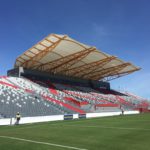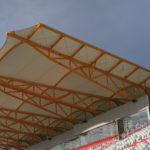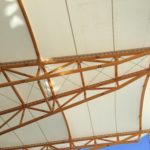Company:
Fabritecture (UFS Australasia Pty Ltd T/A Fabritecture) Gold Coast, QLD
Project Details
Fabric 1
FGT-800 PTFE
Producer:
Seele GmbH & Co. KG
Supplier:
Chukoh Chemical Industries Ltd.
Fabric 2
Norsetex HT
Producer:
Norsenet
Supplier:
Chukoh Chemical Industries Ltd.
Engineer Company 1
Tensys
Design Company
Fabritecture
Architect Company
Populous
Subcontractor Company
Fabritecture
Project Manager Company
Fabritecture
Installation Company
Fabritecture
Please describe the project specifications
The stadium was constructed as part of the National Football Stadium’s redevelopment in Port Moresby, Papua New Guinea. The project was a gift to the community delivered by a partnership between Oil Search (funded & maintained), and the PNG Government. The redevelopment is also part of an upgrade plan to working to secure NRL coverage in PNG for the future (including a home ground for the SP Hunters).
The project scope was design and construction of a tensioned fabric grandstand cover, and a custom printed scrim wrap to create an aesthetic finish for the grandstands. The printing on the scrim-wrap was specially designed to wrap the back of the scaffolding seating.
To everyone’s delight, the entire project was delivered 2 months early!
What was the purpose of this project? What did the client request?
The purpose of the structure was to provide protection for patrons beneath the canopy from the open elements. The scrim wrap was included in the scope to beautify the grandstand infrastructure. The custom print pattern on the scrim wrap was inspired by the weaving pattern of huts in the PNG Highlands.
By including scrim wrap on the grandstands, the finished product generated a more ‘permanent feel’ for the community, reassuring that this project was a true investment to the people of PNG.
What is unique or complex about the project?
Project challenges experienced often stemmed from the logistics of working in PNG. The limited availability of access equipment in PNG often required creative solutions to installation. The restriction of access equipment on site generated the need for work platform nets. All riggers on site were specialised twin-rope riggers, and included members from our in-house rigging team. There were, at times, language barriers that came from working with local labour.
The PTFE fabric used for the grandstand canopy was designed in large panels. Considering the tight program construction was on, this process largely cut down on the overall installation time.
A special ink was required for the printing to ensure a pattern that had the correct finished look, and was resistant to fading to allow the final product to last. Coordination of the scrim wrap patterning and printing was combined to guarantee the printing pattern would align correctly once tensioned.
What were the results of the project?
The end result of the project exceeded the client’s expectations with a fantastic finished product. The project was delivered on budget, and completed 2 months early.
The overall structure and scrim wrap fit perfectly with the environment, and is essentially a maintenance-free system. The self-cleaning property of the grandstand fabric means that the fabric cleans itself with rain. This is a key feature given the surrounding environment generates a lot of dirt in the air.
The finished stadium project generated a lot of excitement amongst the local community and was inspiring to be a part of.
Content is submitted by the participant. IFAI is not responsible for the content descriptions of the IAA award winners.
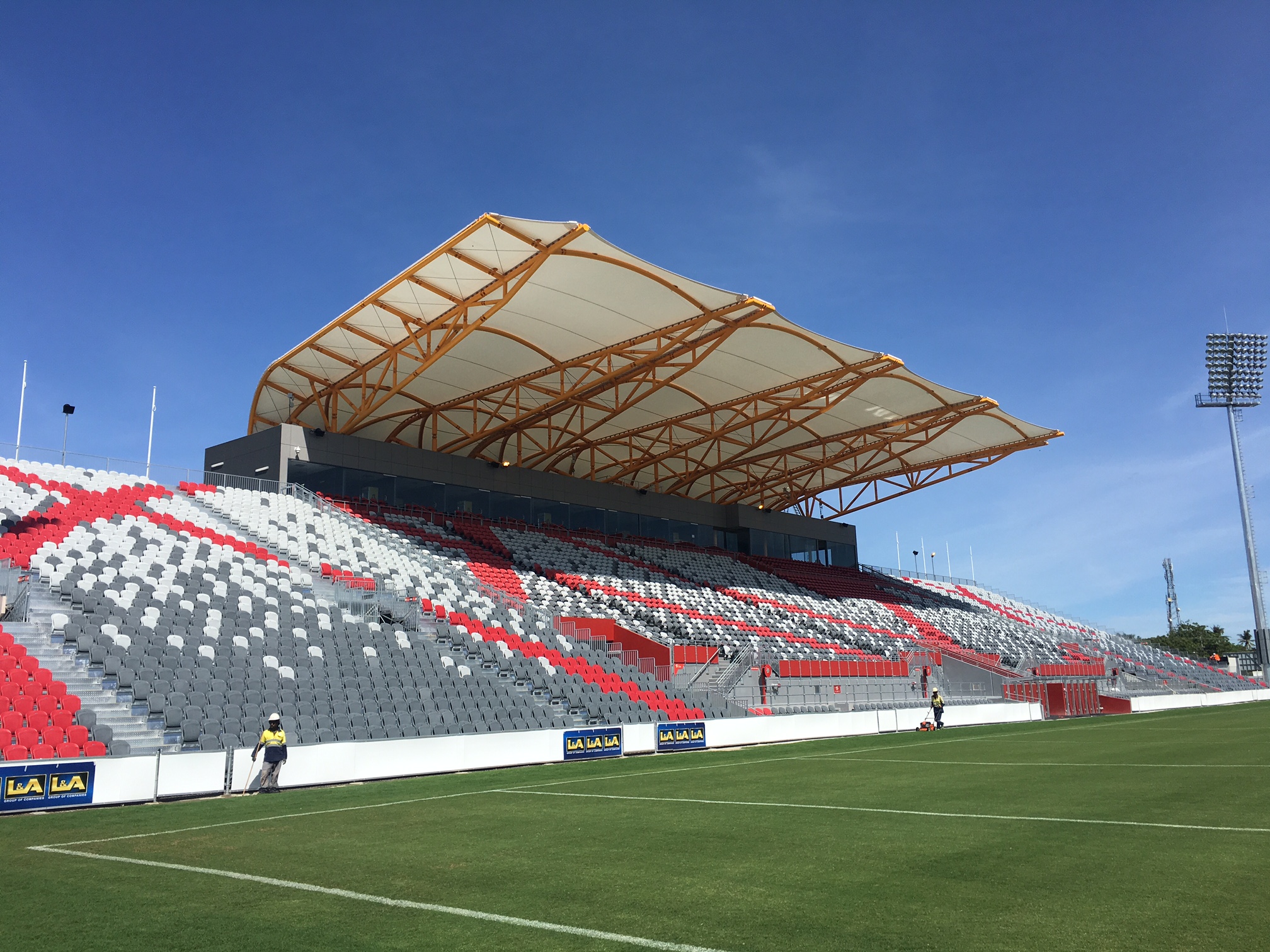
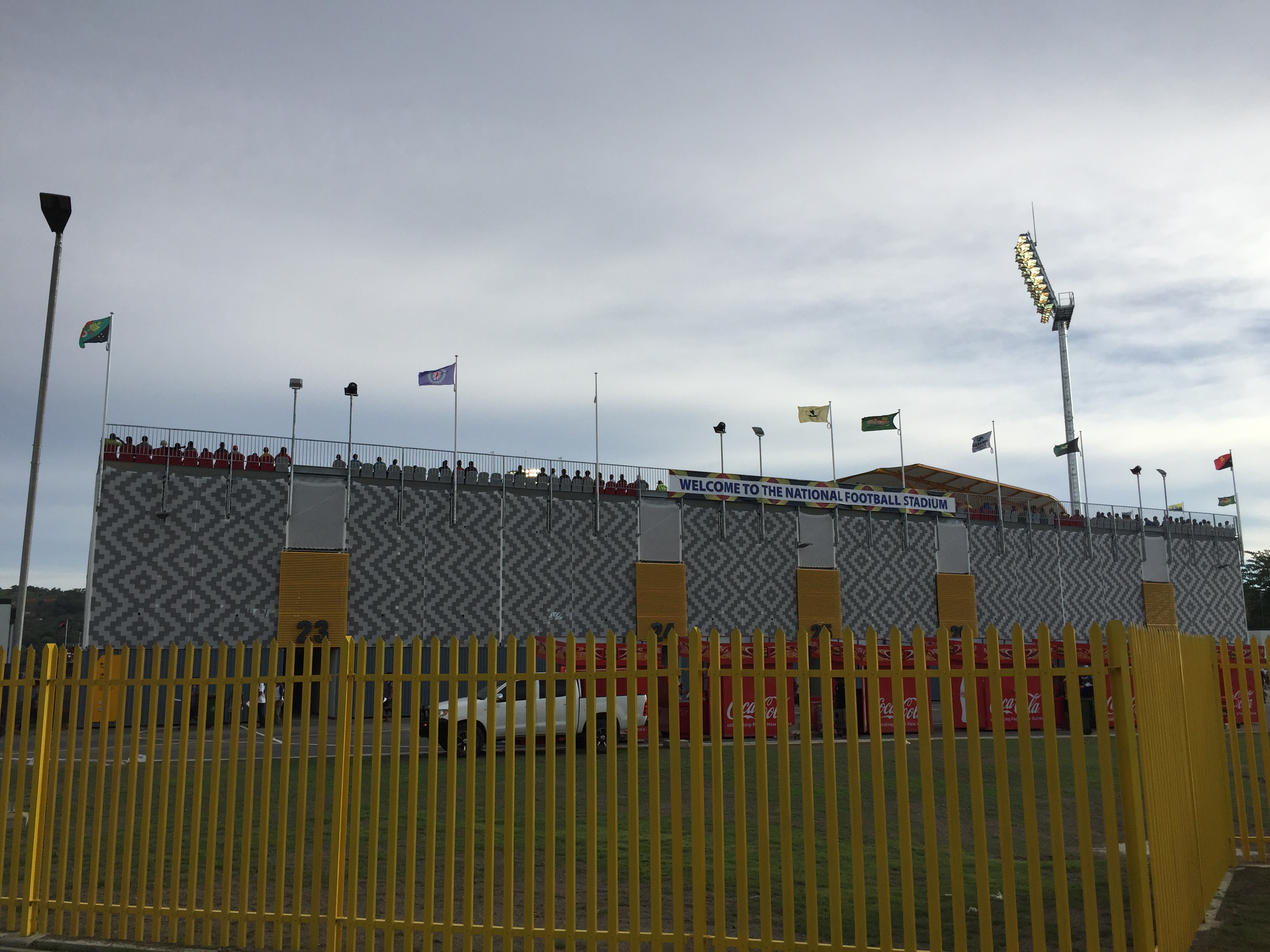
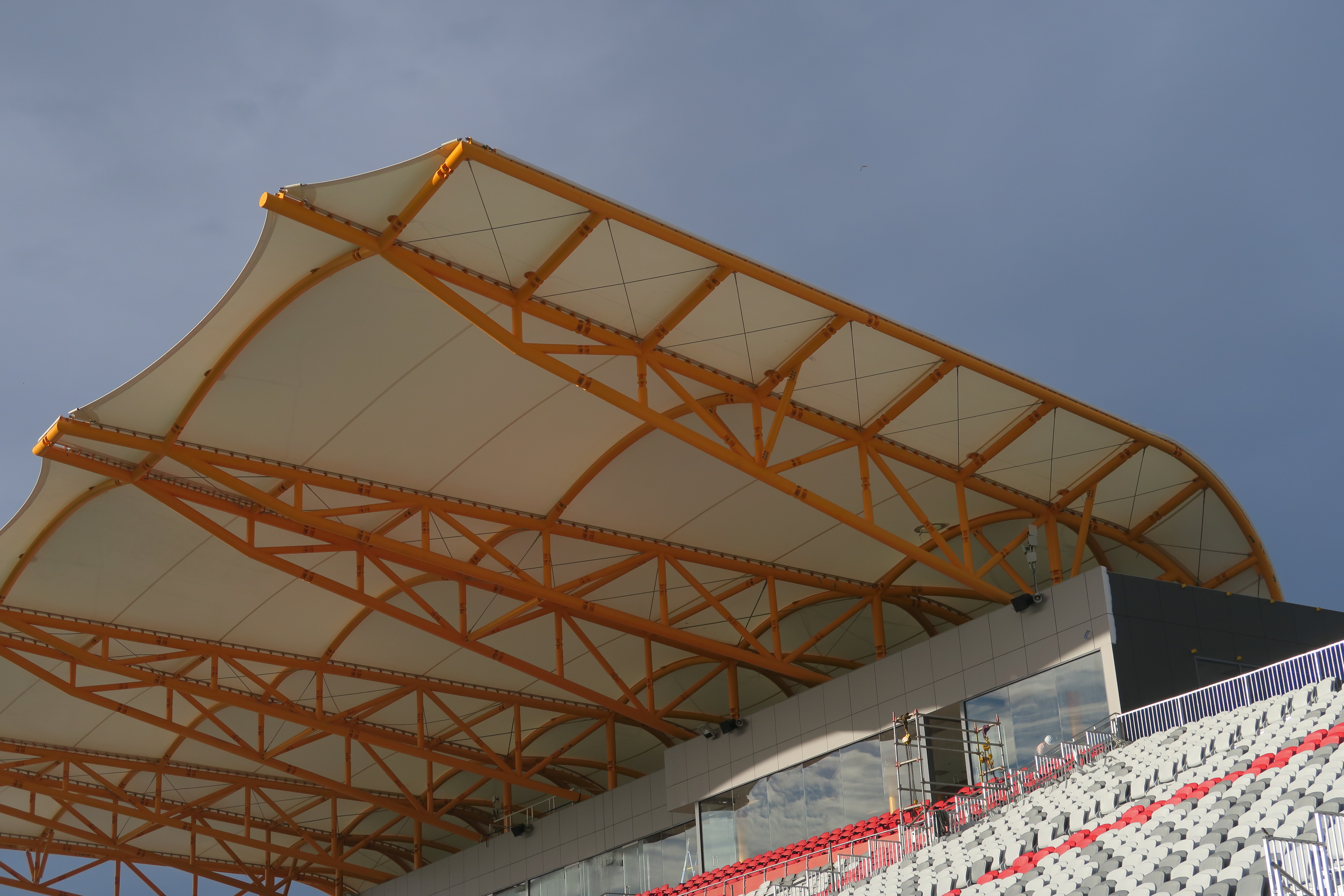
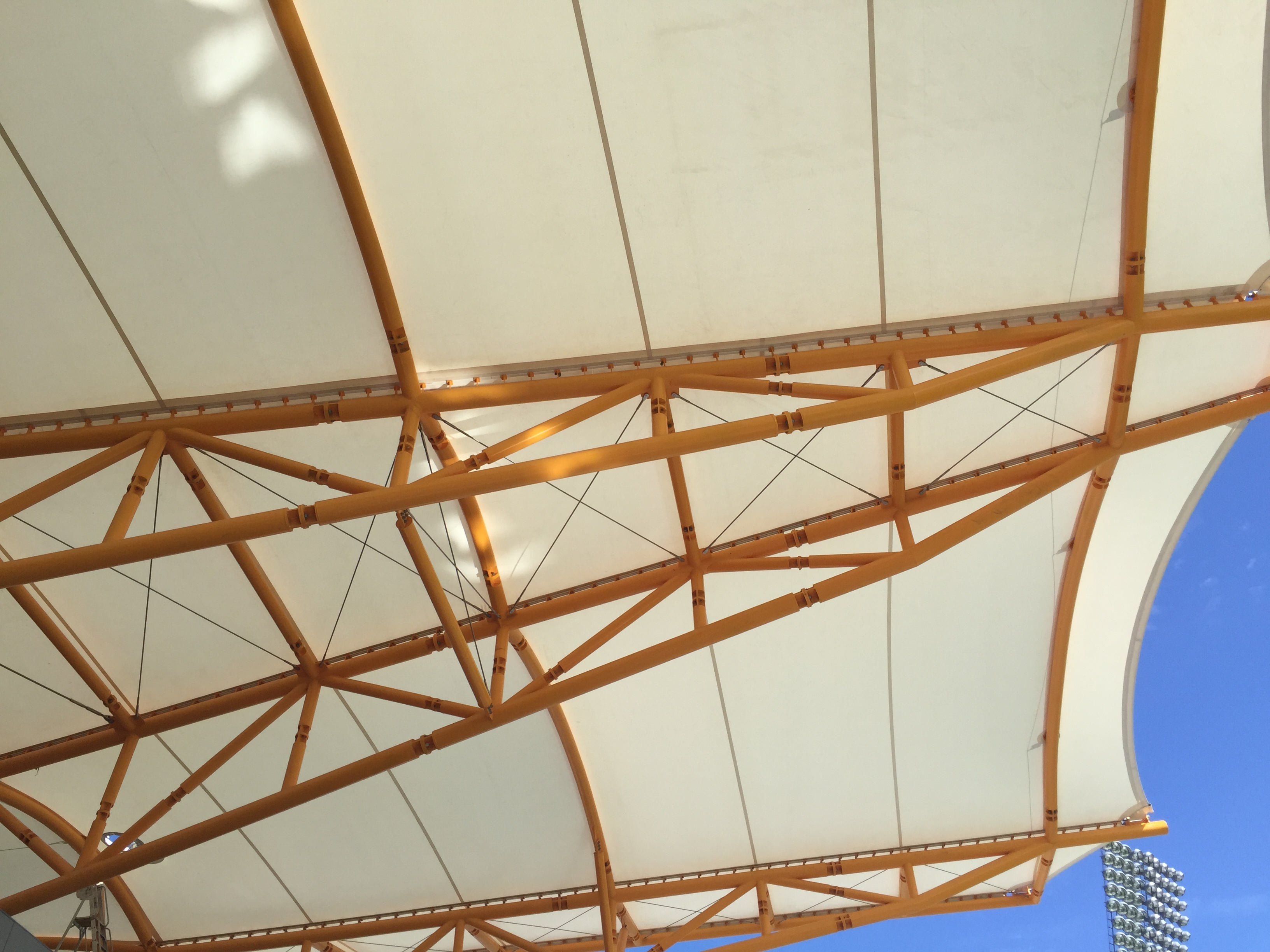
 TEXTILES.ORG
TEXTILES.ORG



